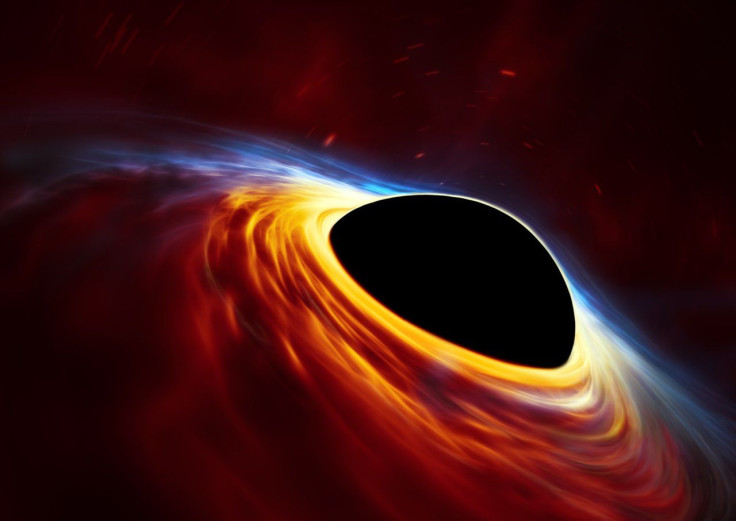‘Naked Singularity’ Can Exist In 4D In A ‘Saddle’-Shaped Universe, Undermining General Relativity

If found outside a black hole, a singularity — a place where the intensity of gravity breaks down the laws of physics governing space and time — would be the first actual phenomenon that would undermine the century-old general theory of relativity that sealed Albert Einstein’s place among scientific geniuses. A new theory put forth by two researchers from the University of Cambridge attempts to do exactly that, by predicting the existence of a naked singularity in four dimensions.
Singularities are thought to exist at the center of black holes, and naked singularity is the name given to singularities that exist outside black holes. General relativity allows for singularities, and the event horizon of black holes prevents us from seeing what happens at that point of gravitational hyper-intensity. The “cosmic censorship conjecture” — a term used to refer to the screening effect of the event horizon — will ensure that the singularity has no effect outside the black hole, and general relativity will therefore still be valid there.
Naked singularities — which, if proven, would upend this aspect of general relativity — have been predicted before, but those predictions all rely on moving beyond four dimensions (the three dimensions of space and one of time). But a new theory proposed earlier this month by two Cambridge researchers is the first time a naked singularity has been predicted in four dimensions.
Read: Hunt For Cracks In Einstein’s General Theory Of Relativity In Cosmic Voids
Toby Crisford and Jorge Santos show, in a paper published recently in the journal Physical Review Letters, “that a naked singularity can form a special kind of curved space known as anti-de Sitter space, in which the universe has a distinctive ‘saddle’ shape. According to general relativity, universes can have various shapes, and anti-de Sitter space is one of these possible shapes,” a statement on the university’s website said.
The shape of the universe has a significant role in the prediction. Named after the Dutch astronomer Willem de Sitter, who worked with Einstein on the spacetime structure of the universe, anti-de Sitter space is quite different from a flat space. It has a boundary which reflects light back when the two meet.
“It’s a bit like having a spacetime in a box. At the boundary, the walls of the box, we have the freedom to specify what the various fields are doing, and we use this freedom to add energy to the system and eventually force the formation of a singularity,” Crisford said in the statement.
Since a naked singularity will have to be forced, the prediction is not possible to test in our universe, because we can’t simulate it in flat space. However, the prediction allows further study of other theories to understand the universe, such as that of quantum gravity.
Introducing charged particles in the simulation could make the naked singularity disappear, according to Santos, who said: “If true, it could imply a connection between the cosmic censorship conjecture and the weak gravity conjecture, which says that any consistent theory of quantum gravity must contain sufficiently charged particles. In anti-de Sitter space, the cosmic censorship conjecture might be saved by the weak gravity conjecture.”
The predictions of Crisford and Santos appeared in a paper titled “Violating the Weak Cosmic Censorship Conjecture in Four-Dimensional Anti–de Sitter Space.”
© Copyright IBTimes 2024. All rights reserved.





















